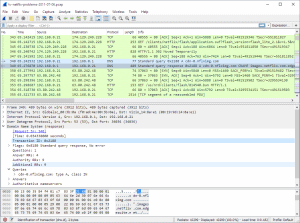

Legacy PBXs have multiple features that are often complex to implement and that allow users to obtain an internal PBX dial tone by dialing a Direct Inward Dial (DID) number. Toll fraud on traditional PRI circuits that terminate on a conventional PBX usually exploit a bad configuration on the PBX itself.
An attacker can generate a significant volume of fraudulent calls from a compromised PBX to international numbers and premium-rate numbers for no other reason than to incur large costs on the telephone bill of the targeted company.Įach of the above cases is different, has a varying impact on the targeted company, and must be dealt with in a different way.īecause telephony networks have evolved from conventional to voice-over-IP networks, the methods used by toll fraudsters have also changed. :max_bytes(150000):strip_icc()/004-wireshark-tutorial-4143298-3db6aeba8777467c8fc3e42ac304f3f6.jpg)
In the most ingenious cases, such fraudsters sell telephony service to their customers on a per-minute basis and route traffic via the compromised PBX, essentially at no cost to them, but incurring large costs for the targeted enterprise.
Fraudulent businesses impersonating a small telco can gain remote access to a PBX through which they route their own customers’ calls. Attackers obtain remote access to a PBX via which they route their own personal calls, charging the owner of the PBX for those calls. Employees using their work phones for unauthorized long-distance and international calls to friends and loved ones, or to premium-rate numbers. Toll fraud is a form of attack that involves the unauthorized use of an individual’s or a business’ telephony services and equipment to make long distance, international, or premium-rate number phone calls that are charged to the owner of the targeted system. 1 In this article, we look at how toll fraud affects both conventional telephony and modern VoIP systems, and what you can do to protect your business.Ī telephone system is susceptible to many different types of attacks. The Communications Fraud Control Association (CFCA) reports that in 2019, toll fraud caused US$28.3 billion globally in losses, corresponding to 1.74% of global telecom revenues. 
One of the most common forms of attack on a telephony network is what is known as toll fraud. When we think about network security, the telephone network is often overlooked as a target by attackers.



:max_bytes(150000):strip_icc()/004-wireshark-tutorial-4143298-3db6aeba8777467c8fc3e42ac304f3f6.jpg)



 0 kommentar(er)
0 kommentar(er)
